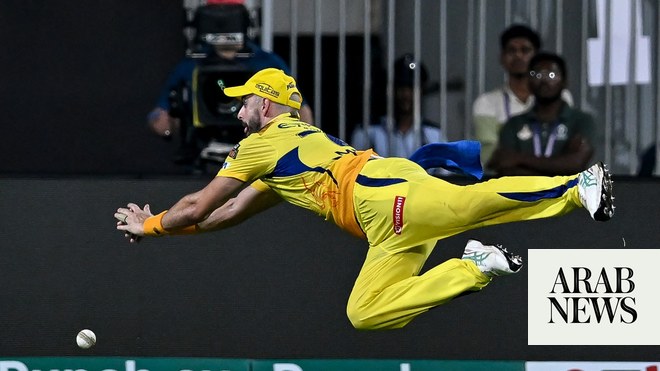
When Robert Warzycha scored Everton’s second goal in the 80th minute of their match against Manchester United on Wednesday 19 August 1992, he helped the Toffees secure all three points at Old Trafford. Mo Johnston added a third in the final minute to consign United to their second consecutive defeat of the season. Until this season, it was the only time United had lost their opening two games of a Premier League campaign. However, back in 1992-93, they went on to win the title comfortably, losing just four of their remaining 40 matches to finish 10 points clear of second-placed Aston Villa.
Warzycha’s goal at Old Trafford made him the first player from outside the British Isles to score in the Premier League. The Poland international was one of only 13 foreign players in action during the opening weekend of its inaugural season. Only two of those 13 were from outside Europe – Ipswich’s Canadian goalkeeper Craig Forrest and Liverpool’s Israeli striker Ronnie Rosenthal.
When the current season kicked off, there were more Brazilian players (15) in the starting line-ups than the entire foreign contingent back in 1992. The original 13 foreign players represented just 5% of the starting XIs, whereas last weekend there were 128 foreign players out of the 220 starters, a whopping 58%. These 128 players came from five continents, with 34 nationalities represented.
It’s a similar story in the dug-outs. In 1992-93, all 22 managers in the league were British or Irish – 15 Englishmen, five Scots, a Welshman and an Irishman. There are now a dozen foreign managers in the Premier League, and we still await an English manager winning the title.
Only one of the 22 clubs in the league replaced their manager in the first season of the Premier League, Chelsea sacking Ian Porterfield in February 1993 and bringing in David Webb. By contrast, Watford have burned through seven managers over the last two seasons.
In these days of blanket TV coverage – 200 of the 380 matches will be televised live this season – it seems odd that the opening day of the first Premier League season – when Brian Deane scored the first Premier League goal in Sheffield United’s 2-1 win over Manchester United at Bramall Lane – was not. The first live broadcast was not until the Sunday of the opening weekend, when Teddy Sheringham gave Nottingham Forest victory over Liverpool at the City Ground. That was Sheringham’s last goal for Forest. He moved to Tottenham shortly afterwards and added 21 more to become the season’s leading scorer.
Forest were responsible for a few Premier League firsts. When Mark Crossley shovelled a tame Colin Hendry header into his own net at Ewood Park in September, he became the first player to have the dreaded initials of OG etched against his name. And Brian Clough suffered the ignominy of being the first Premier League manager to be relegated after Forest’s 2-0 home defeat to Sheffield United in May. It was the last act of his illustrious career. “Only Brian Clough could perform a lap of honour on the day his team dropped out of the Premiership,” wrote Patrick Barclay in the Guardian.
At the other end of the table, Norwich City enjoyed their highest position in top-flight football by finishing third, even though they had a goal difference of minus four. No team has finished as high in the table with a negative goal difference since and Norwich have never matched that third-place finish. In their nine subsequent seasons in the Premier League they have never finished in the top half of the table and their relegation last season was their sixth from the Premier League – a record for any club.
Squeezed between champions Manchester United and Norwich were Ron Atkinson’s Aston Villa, who only faded out of the title race at the death when they lost their last three matches. Villa have not reached the lofty position of second since and, in a similar vein to Norwich, their goal difference of +17 is the worst of any runner-up in the Premier League’s 30 seasons.
Crowds were a lot smaller 30 years ago, with just under 10 million going through the gates in the 1992-93 season, an average attendance of just over 21,000. These figures have increased considerably, with more than 15 million attending games last season, an average of just under 40,000 per match. In 1992-93 many of the grounds were in the midst of reconstruction following the Taylor report that recommended top-flight stadiums should be all-seaters by the beginning of the 1994-95 season. For example, Arsenal’s average for the 1992-93 season at Highbury was 24,000, compared to just under 60,000 at the Emirates last season.
Wimbledon had the smallest crowds in the first season of the Premier League. As tenants at Selhurst Park, they struggled to fill the ground, attracting an average crowd of just over 8,000 – a figure that was boosted considerably by a crowd of more than 30,000 for the visit of champions Manchester United on the final day of the campaign. Of Wimbledon’s 21 home games in 1992-93, only six attendances were above 10,000 and they recorded the lowest ever Premier League crowd (excluding those affected by Covid restrictions) of 3,036 hardy souls for their match with Everton in January 1993.
Of the 22 clubs who played in the opening season of the Premier League, 13 are currently in the top flight, five are in the Championship and three are further down the Football League. Oldham Athletic, who performed a miraculous escape in 1992-93 by winning their last three matches in the space of a week, have slid furthest down the ladder. They were relegated to the National League last season after finishing 23rd in League Two, becoming the first of the founding members of the Premier League to be relegated from the Football League.
Over the last three decades, the finances of clubs have transformed dramatically. The original Sky broadcast deal was lauded as a game changer and, while it represented a significant uplift from previous deals, it is dwarfed by the current levels of broadcast revenue. That first deal was worth £191m over a five-year cycle, so less than £40m per year. To put that into perspective, the club that finishes bottom of the league this season will receive a minimum of £106m from central broadcasting rights, more than double the annual deal for all 22 clubs back in 1992.
The latest TV deal, which runs from this season, sees domestic rights stay at the same level as the previous cycle at £5.1bn over the next three years. For the first time, the Premier League will generate more revenue from outside the UK than within, as its overseas rights will be approximately £5.3bn, with only a handful of countries, such as Afghanistan, Cuba and North Korea, not taking a feed.
Little did Warzycha know that his one and only Premier League goal would be the first small, imperceptible step in the globalisation of top-flight English football.
This article appeared first on The Football Mine
Follow Richard Foster on Twitter
Richard’s book Premier League Nuggets is out now












